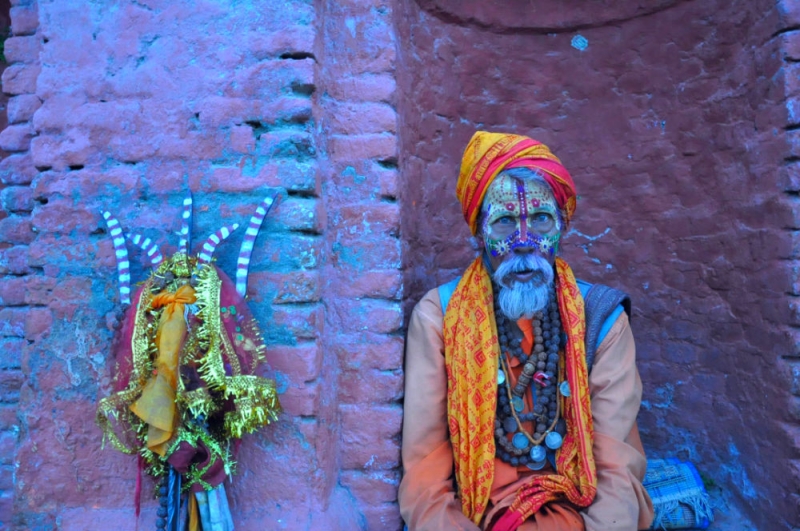
The official language is Nepali.
Currency — Nepalese rupee (1 NPR ≈ 0.55 RUB).
Local time — GMT +5:45 (difference with Moscow 3 hours 15 minutes).
I have visited many cities, but the capital of high mountain Nepal will be remembered for a long time. Unique color, many old temples, silent Buddhist monks, pesky rickshaws and street vendors of everything, noise and dust – this is all about Kathmandu.
The capital of Nepal often serves as a transit point for further travel around the country. If this is your first trip to the country where Buddha was born, I advise you not to stay in Kathmandu for more than 3 days, the city can be seen very quickly and may not be to everyone’s liking.
Lifehacks:
- Since dust is everywhere and there is a lot of it, take a cotton-gauze bandage with you; breathing without it is not always easy.
Masks can also be bought on the street. And most of the shops are located right on the street.
You need to bargain everywhere. Don’t rush to buy souvenirs in the first store you come across, go to several, compare and then tell the sellers that you saw something cheaper.
- It is better to take money with you in dollars; you can change them anywhere. Cards are almost never accepted anywhere. The best exchange rate, according to locals, is at NABIL BANK. There are plenty of ATMs, especially in the Thamel area, where you are most likely to stay, because there is a very large concentration of hotels there.
- Do not be fooled by offers from locals to show you this or that place; most likely, they will either take you to a store or ask you for money for a mini-tour. In general, be patient, because there are a lot of sellers of everything for tourists on the streets and they are incredibly annoying.
- Don’t rush to pay money to visit this or that attraction – almost everywhere you can go for free.
- Download offline maps to your phone in advance or ask the hotel for a paper map. Remember the landmarks of your hotel (a large cafe sign in English with a spelling mistake, a rusty bicycle, the most annoying bracelet seller in the whole world). The city is the same everywhere, you can get lost in it at a distance of 30 meters, verified.
- At the cafe, order Dal Bat. The normal price for it is 300 rupees (about 170 rubles). It is based on rice, various additives from vegetables and meat (optional). The main feature of this dish is that you can ask for an addition to it for free throughout Nepal, with the exception of chicken meat :).
- Locals eat at Yangling Restaurant (establishment coordinates: 27.7160°N, 85.3071°E): reasonable prices, very tasty momos (Nepalese dumplings. Thinner dough, more vegetables in the filling). Wi-Fi password: 12345abcde.
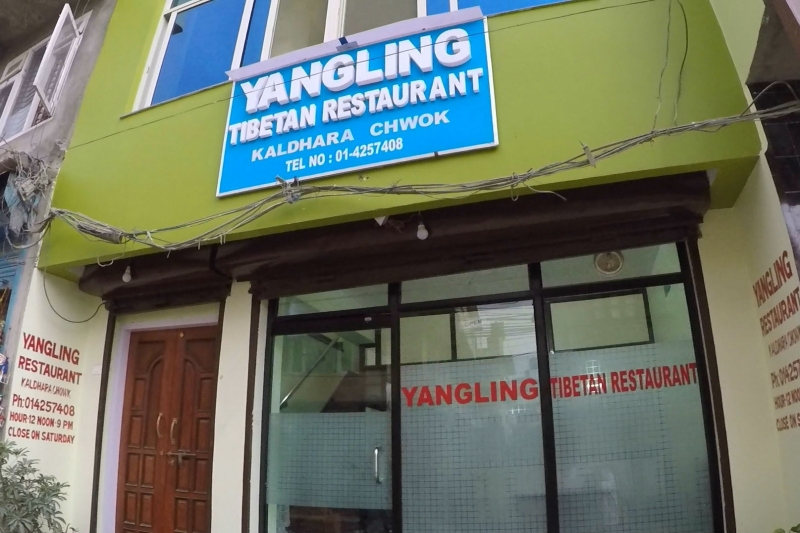
- Take tees or extensions with you. In hotels, as a rule, there are a maximum of 2 sockets and they can be very loose. I lived in four hotels, not super cheap ones, everything was the same.
What to see in 2-3 days
Thamel District
A large area in which everything is mixed. There are places where everything is just for tourists, and places where everything is for locals. I recommend you take a walk here for the excellent opportunity to take many beautiful and colorful photographs. Feel free to go into all the courtyards and temples, into souvenir shops – here they are more like mini-museums.
Durbar Square (palace square)
Locals call it “durbare square” – ask that way. Area coordinates: 27.7042°N, 85.3056°E.
You can get in for free; to do this, you just need to bypass the ticket office – there are no fences or security about 30 meters from it. Or pay 1000 rupees for entry (approximately 550 rubles).
What to watch:
- The square itself. Quite spacious, lined with counters with souvenirs and filled with guides trying to sell their services and guess your nationality by appearance. (I was Norwegian, Polish and Argentinean. I had to reveal the truth that I am from the free peoples of Middle-earth.)
- Palace of the living goddess Kumari. The little girl is worshiped by all of Nepal: she is forbidden to set foot on the ground, and she leaves the palace only on major holidays – 3 or 4 times a year. She will remain a goddess until she reaches puberty, after which another will take her place.
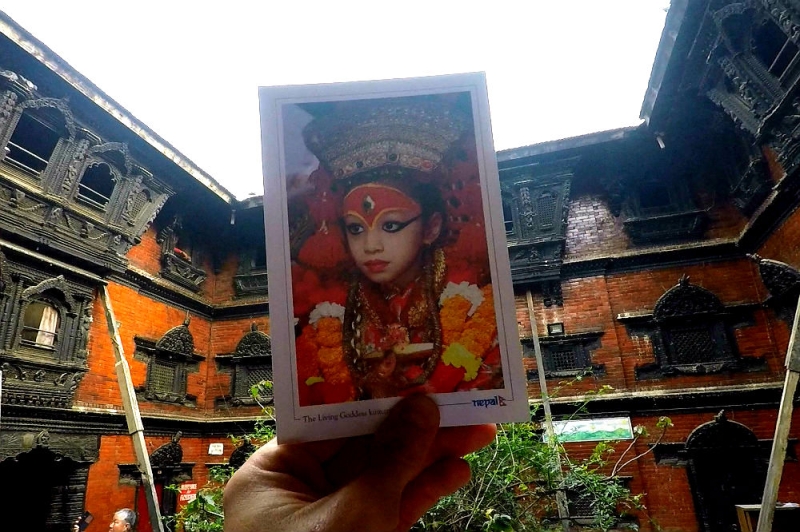
Her palace house is located on the territory of the palace square. It is considered great luck to see the goddess in the window of her palace. You can ask the locals what time she comes to the window. The hours of its appearance are usually fixed (± 30 minutes).
- Buddhist and Hindu temples. Hindus in Nepal make up about 90% of the population. But they are very proud of the fact that Buddha was born in their country. Don’t be surprised when you see the inscription “Buddha was born in Nepal” at almost every step.
- Consequences of the 2015 earthquake. Nepal is a poor country, so the ruins are simply neatly fenced with small fences and much has not yet been removed.
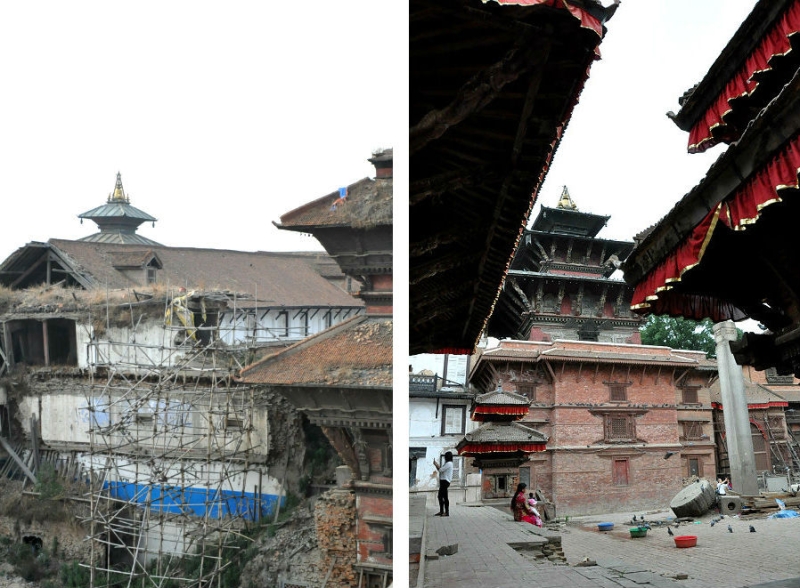
Swayambhunath (Monkey Temple)
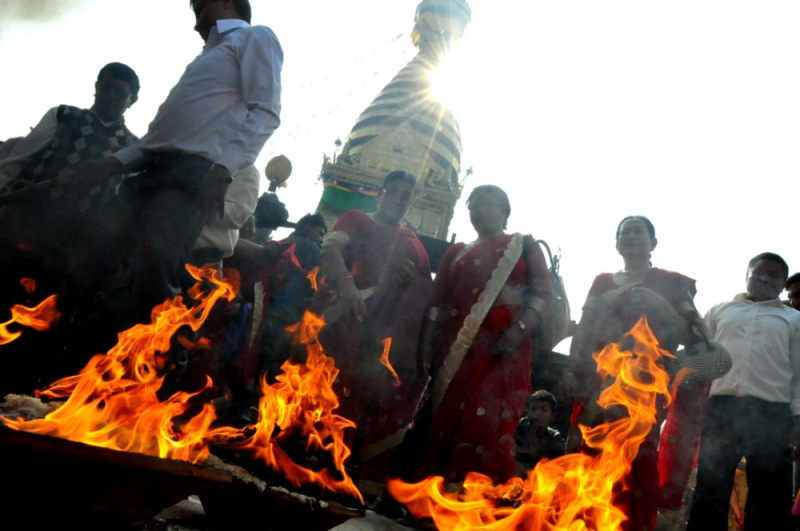
Locals call this place Swayambhu or Monkey Temple (coordinates: 27.7150°N, 85.2905°E).
One of the most famous Buddhist temples in Nepal. It is located at the top of a hill with two paths leading to it. One of them is exactly 365 steps (verified). The stairs are quite steep, consider your strength.
On the other way the climb is much easier (it’s on the other side of the mountain) and there is a detour past the ticket office. Just go to the right along the fence, there you will see another staircase going up. No one is watching this route, no one is checking tickets anywhere.
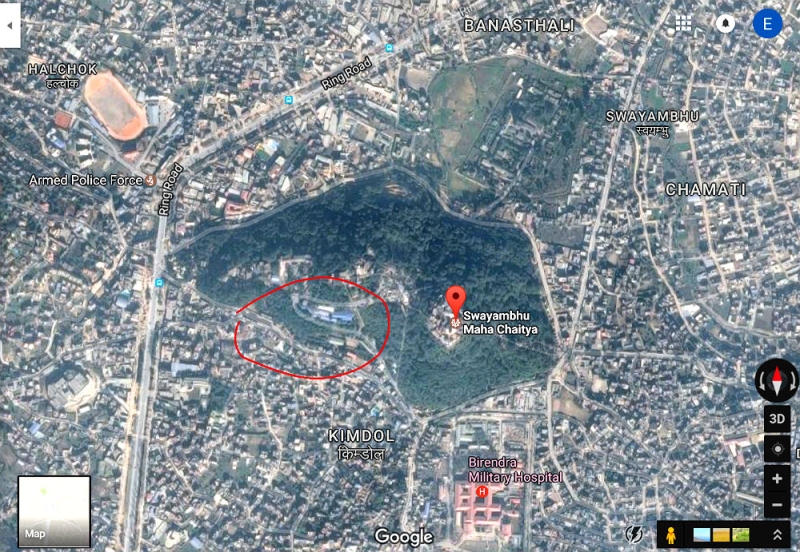
What is happening here and what to do here:
- At the top there is a large stupa with painted eyes looking into the distance. There are many believers and just as many tourists. In the evening there is almost no one, if you want to see everything quietly, come in the evening.
- Spin the Buddhist mantra drums.
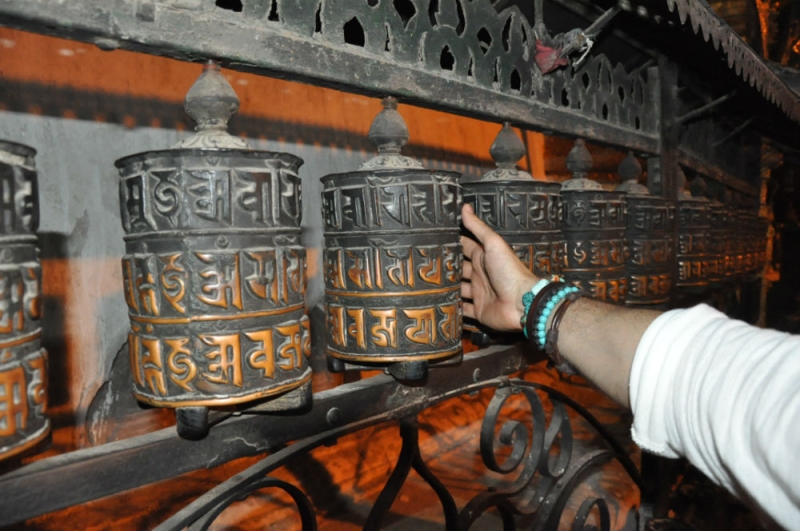
- Take a selfie with the monks – they don’t mind at all.
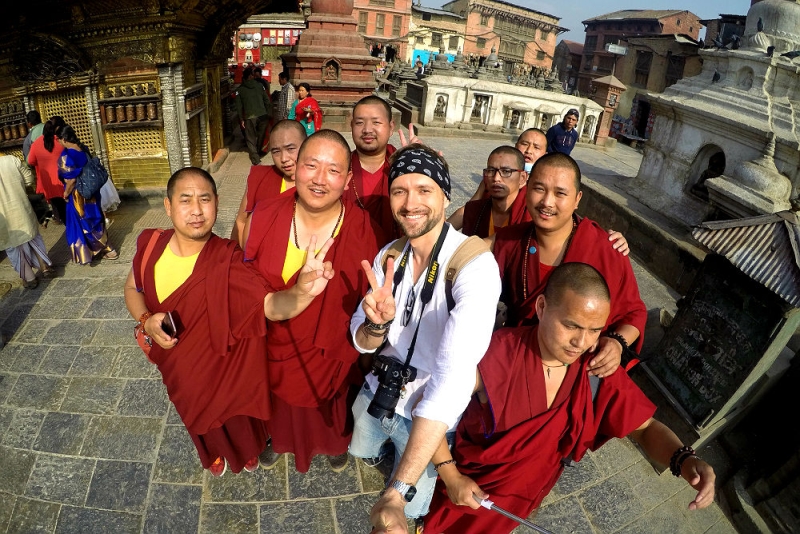
- Beautiful panorama of the city, come in the evening before sunset.
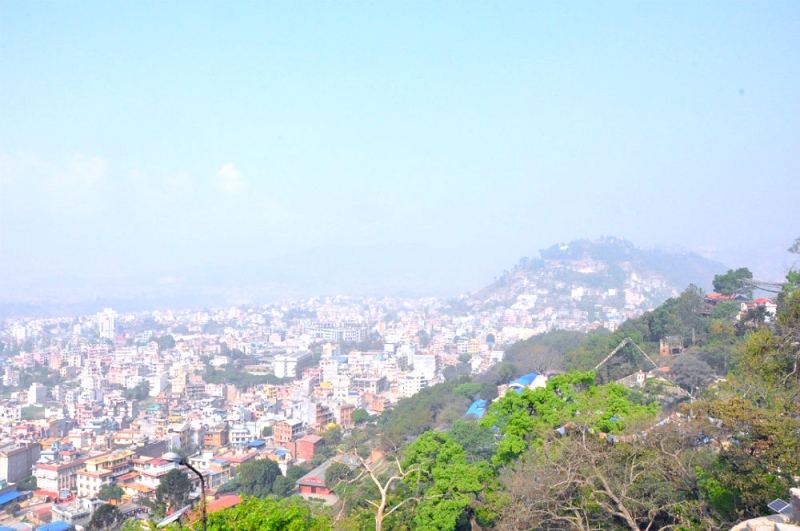
- There are a lot of monkeys here, they are not cute, they look more like gopniks from the outskirts. Don’t try to pet them or approach them abruptly, they might call your friends 🙂
Pashupatinath
This is an old Hindu temple of the god Shiva (coordinates: 27.7105°N, 85.3487°E). Services are held here, there is a deer park, and the dead are cremated here. It is believed that a funeral on the temple grounds is a very big plus for karma.
I recommend going here if you are ready to see something truly wild and, of course, without children. To be honest, what was happening didn’t shock me and I didn’t feel any bad energy there.
You can also get into Pashupatinath for free (entrance generally costs 1000 rupees, approximately 550 rubles).
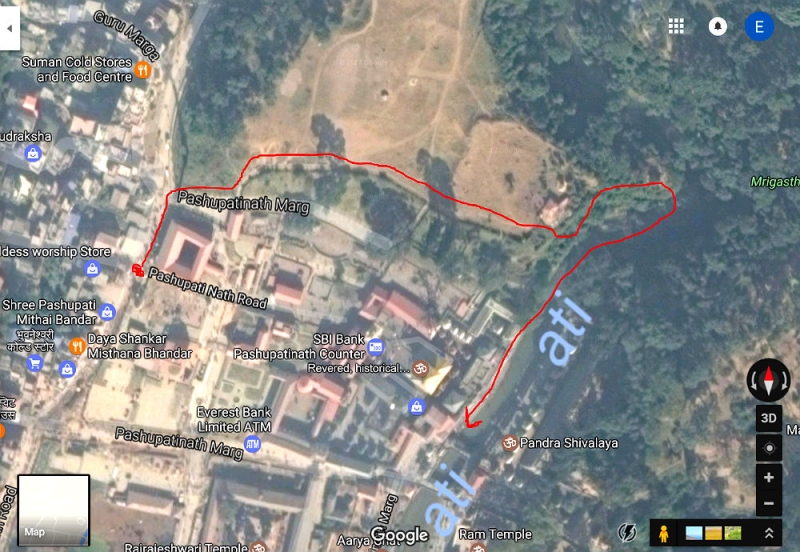
The temple is divided into two parts. In the lower part there are burials, in the upper part there are chants in honor of the god Shiva; It’s very calm there and there are a lot of monkeys.
Bottom part
Burials take place on special pedestals; tourists cannot go to them; only locals are allowed in. Everything passes calmly, no crying or groaning, there is a different attitude towards life and death, because, according to Hinduism, everyone is reborn. The whole process takes about 3-4 hours. At the end, the ashes are thrown into the water. Downstream people bathe, wash things, look for gold teeth and rings.
Upper part
Strikingly different from the funeral part of the temple, although in contrast with the lower part everything will be strikingly different 🙂 In the upper temple there are Hindu chants, a lot of old temple buildings, monkeys, chickens, two or three cows, there are a park with real deer, you can look at them from behind the fence and even feed them.
More sights
1. Baudnath (the same Swayambhunath, only not on the top of the mountain or more).
2. Frick Street (a waste of time, now there are only tourist shops and two or three hints in the form of acid signs that the hippie movement once began here).
3. Dream Garden (just a park with palm trees).
What to bring as souvenirs
Masks, flags with mantras, herbal tinctures and ointments, jewelry.
My advice
Just walk around the city, take pictures of everything you see, bargain everywhere, don’t take off your respirator and absorb the flavor of the capital of the highest mountainous state in the world.

